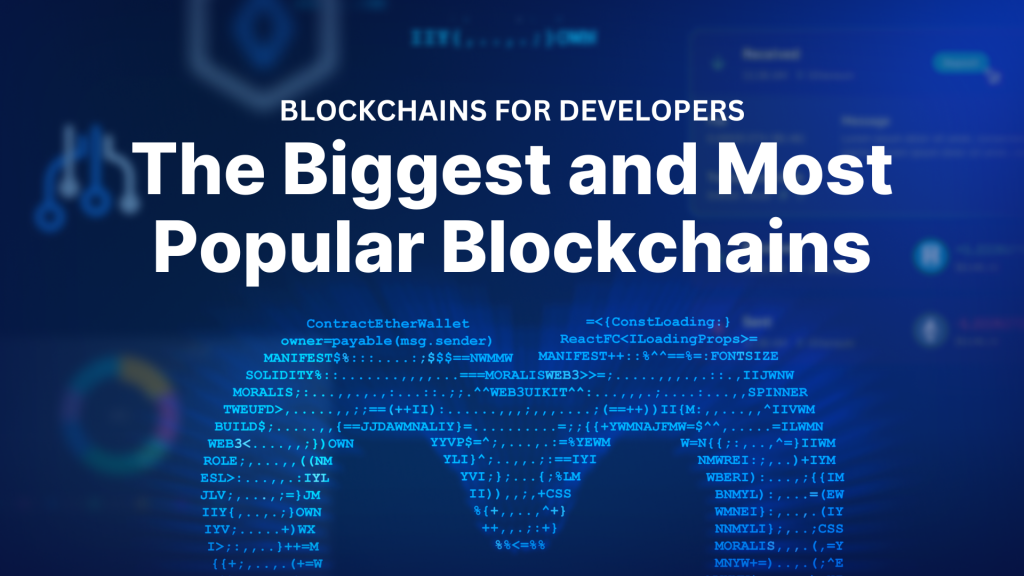
The Web3 space comprises many blockchains of different types and sizes. But what are the biggest and most popular blockchains? And what are the most prominent blockchain networks for developers? Well, answering the questions above is easier said than done, as there are multiple ways to measure a blockchain’s size and popularity. However, if you’re looking for a nuanced answer, join us in this article as we explore the biggest and most popular blockchains in terms of market cap, transaction volume, ecosystem, and more!
Overview: Biggest and Most Popular Blockchains
In today’s article, we’ll kick things off by answering the question, ”What are the biggest and most popular blockchains?”. In doing so, we’ll look at the most significant blockchain networks in terms of market cap, transaction volume, and ecosystem. From there, we’ll explore the most prominent blockchain networks for developers. Lastly, to top things off, we’ll introduce you to Moralis’ industry-leading suite of Web3 API, as this is the easiest way for you to build cross-chain compatible decentralized applications (dapps)!
In Moralis’ suite of premier APIs, you’ll find many tools that make Web3 development more seamless. Some prominent examples include the Token API, Streams API, etc. With these tools, you can build dapps faster and smarter, allowing you to save both valuable development time and resources.
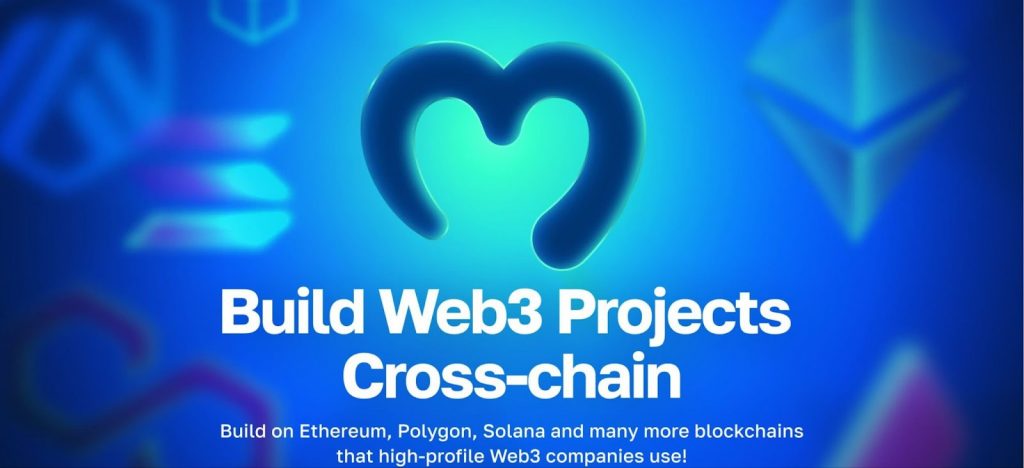
So, if you’re serious about building blockchain projects, consider checking out Moralis. You can sign up with Moralis free of charge, and you’ll gain immediate access to our industry-leading Web3 APIs!
What are the Biggest and Most Popular Blockchains?
Providing a straightforward answer to the question, ”What are the biggest blockchains?” is easier said than done. The reason for this is that there are multiple different ways to measure the size of blockchains. For instance, one blockchain might be the biggest in terms of market cap; meanwhile, another might be the largest when it comes to volume.
Consequently, in the following subsections, we’ll look at the biggest and most popular blockchains based on three metrics:
- Market Cap
- Transaction Volume
- Ecosystem
So, without further ado, let’s kick things off by looking at the biggest blockchains by market cap!
Biggest Blockchains by Market Cap
The crypto market comprises many coins on multiple chains with an accumulated total market cap of about $1.4 trillion. While some blockchain networks only host a single token, other networks – such as Ethereum – are home to thousands of coins. So, when measuring a blockchain’s market cap, we need to take this into account.
As such, to make things as straightforward as possible, we’ll mainly focus on the market cap of a chain’s native token to determine which is the largest network. However, the order remains the same even with all tokens for each chain considered.

With that said, here are the biggest blockchains by market cap:
- Bitcoin: Even though the Bitcoin blockchain doesn’t host as many tokens as other chains such as Ethereum, BNB Smart Chain (BSC), etc., it’s still the biggest network by a mile when it comes to market cap. In fact, Bitcoin has a total market cap of about $740 billion, making up more than 50% of the total value of the crypto industry.
- Ethereum: Ethereum is the second largest blockchain when it comes to market cap. The chain’s native token, ether (ETH), has a total value of $244 billion, making up about 17% of the market share. However, it’s worth noting that the Ethereum ecosystem hosts a variety of additional tokens. Yet, even when taking these into account, Bitcoin remains the most significant blockchain in terms of market cap.
- BSC: The third largest blockchain is BSC (BNB Smart Chain), and its native token, BNB, has a total market cap of $35 billion, making up about 2.5% of the market share. However, like Ethereum, BSC hosts a vast network of additional cryptocurrencies. As such, when it comes to the actual market cap of the BSC blockchain with all tokens considered, it isn’t all that far behind Ethereum.
Most Popular Blockchains by Transaction Volume
When it comes to transactions, it’s also possible to measure which is the biggest blockchains in various ways. For instance, we can look at the total number of transactions, the number of transactions over a given time period, etc.
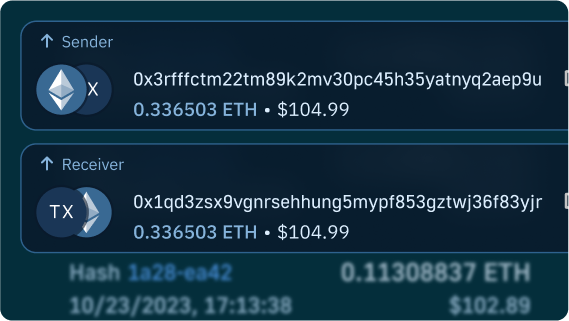
However, for this section, we’ll look at the biggest blockchains by transaction volume in USD over the past month across all dapps and smart contracts. Doing so gives us insight into the current state of the blockchain networks. Nevertheless, based on this, Ethereum stands out as the most significant blockchain by transaction volume:
- Ethereum: Ethereum is the most extensive blockchain network when it comes to transaction volume. At the time of writing, the total value of all transactions over the past month amounts to approximately $115 billion.
- Arbitrum: Arbitrum is the second largest chain among the biggest blockchains by transaction volume. Over the past 30 days, Arbitrum has had a total transaction volume of about $26 billion across all dapps and smart contracts hosted on the chain.
- BSC: BSC is the third most significant blockchain when it comes to transaction volume measured in USD. During the past 30 days, the network has had a total transaction volume of just above $14 billion.
Biggest Blockchain Ecosystems
Do you know how many blockchains there are? And do you know that there are different types of blockchain networks? Some blockchains are mainly used for transactions, while others support smart contracts, allowing developers to build decentralized applications (dapps)!
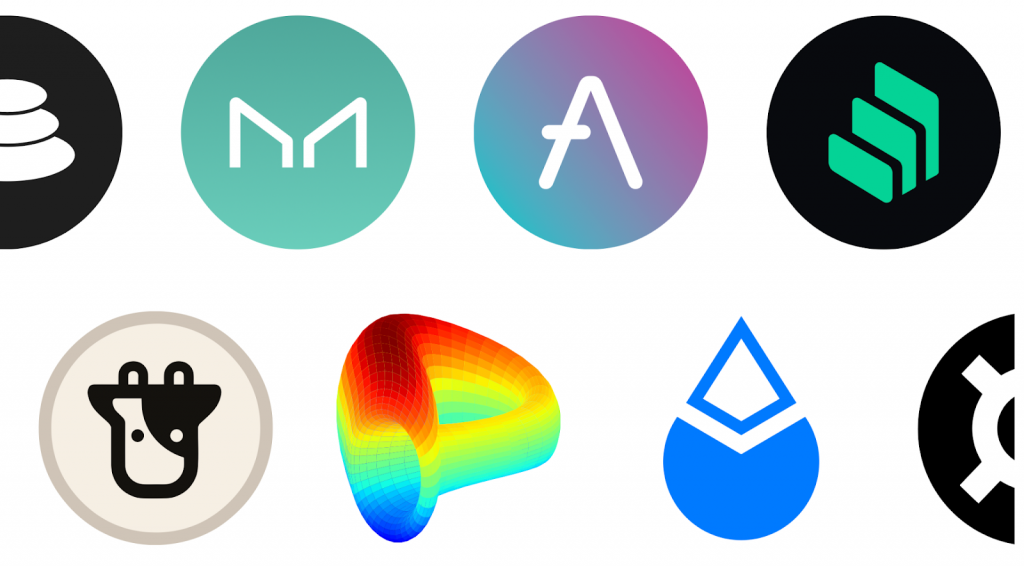
In this section, we’ll explore the three biggest blockchains that allow you to build dapps. And we’ll measure the size of a network by the number of projects hosted on the chain:
- BSC: BSC is the most significant blockchain ecosystem when it comes to the number of dapps. This network hosts about 5.1K projects, and some prominent examples include PancakeSwap, Venus, and 1inch.
- Ethereum: The second largest blockchain ecosystem is Ethereum, and the network hosts approximately 4.4K dapps. Some examples of popular projects on Ethereum include Uniswap, Blur, and MakerDAO.
- Polygon: Polygon is the third largest ecosystem in terms of the number of dapps hosted on the blockchain. This network features about 1.9K different protocols, and some examples are Aavegotchi, Tangible, and QuickSwap.
What are the Most Popular Blockchain Networks for Developers?
Now, with an overview of the biggest chains in terms of market cap, transaction volume, and ecosystem, let’s explore the most popular blockchain networks for developers. And we have, in fact, already touched on three of them:
- Ethereum
- BSC
- Polygon
However, we’ll dive deeper into each in the following sections to explain what they are and how they work!
Ethereum: #1 Blockchain for Developers
The Ethereum blockchain launched back in 2015, and it is a proof-of-stake (PoS) network designed to be scalable, secure, decentralized, and programmable. Ethereum natively supports smart contracts, and the blockchain hosts a vast ecosystem of dapps, ERC-20 tokens, NFTs, and other exciting projects.
Furthermore, Ethereum is the go-to choice for many Web3 developers. But why exactly is that? And why do developers choose to build on Ethereum?
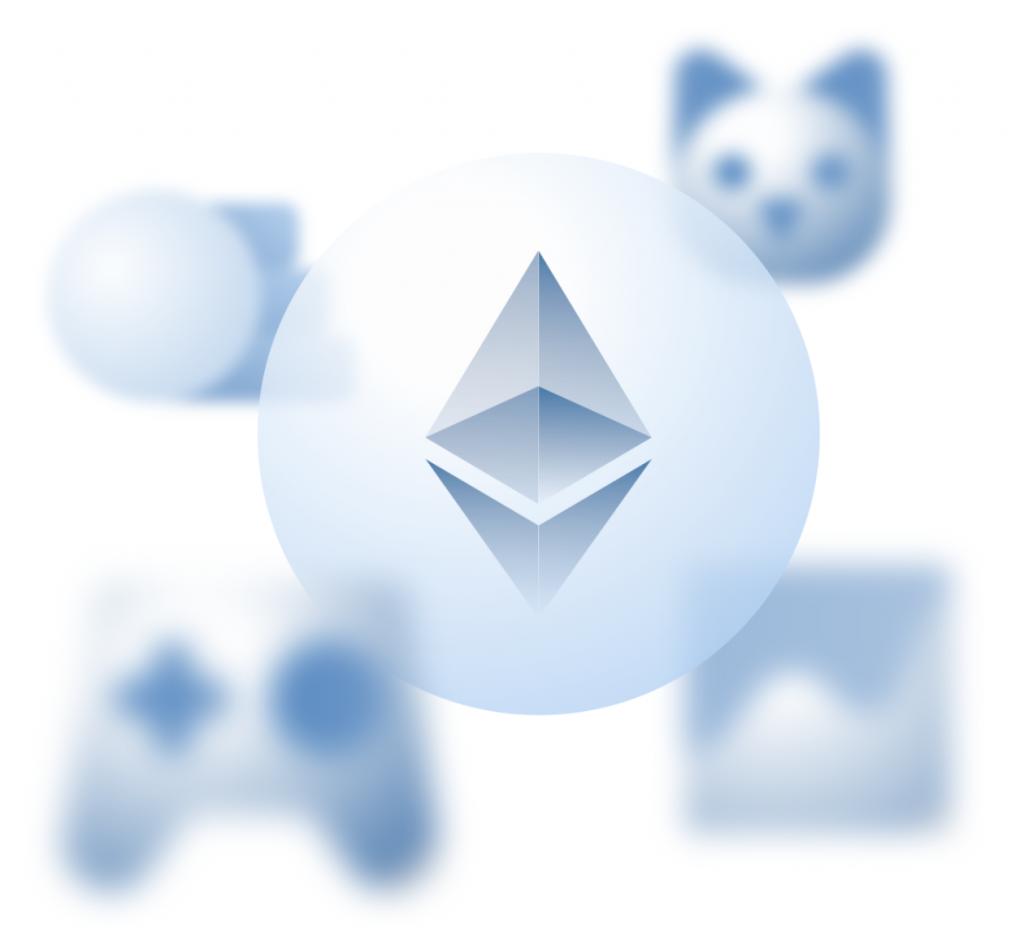
First of all, Ethereum is widely considered to be the first programmable blockchain. And with a rich history, the network has had time to mature and evolve. As such, Ethereum currently features many prominent tools and resources that make dapp development significantly more accessible.
A great example is Solidity, the most popular programming language for writing Ethereum Virtual Machine (EVM) compatible smart contracts. This language features many Solidity tools that make smart contract development more seamless. Other examples include testnets like Sepolia and Goerli, popular IDEs such as Remix, Web3 wallets like MetaMask, etc.
Another reason developers are building on Ethereum is the network’s high security. Ethereum has a long and strong track record in terms of security, and its consensus mechanism is designed to keep the network safe and prevent malicious attacks.
Additionally, the Ethereum network features its own native cryptocurrency called ether (ETH). ETH plays an essential role in the Ethereum ecosystem, as it’s used to pay for transactions on the blockchain. Consequently, anyone looking to interact with the Ethereum blockchain generally needs ETH in their wallet to pay associated gas fees.
Nevertheless, that briefly covers an overview of Ethereum; let’s now explore BSC!
BNB Smart Chain (BSC)
BSC, or BNB Smart Chain, was initially known as Binance Smart Chain when it launched in 2020. However, a couple of years later, in 2022, Binance Smart Chain was rebranded as BNB Smart Chain.
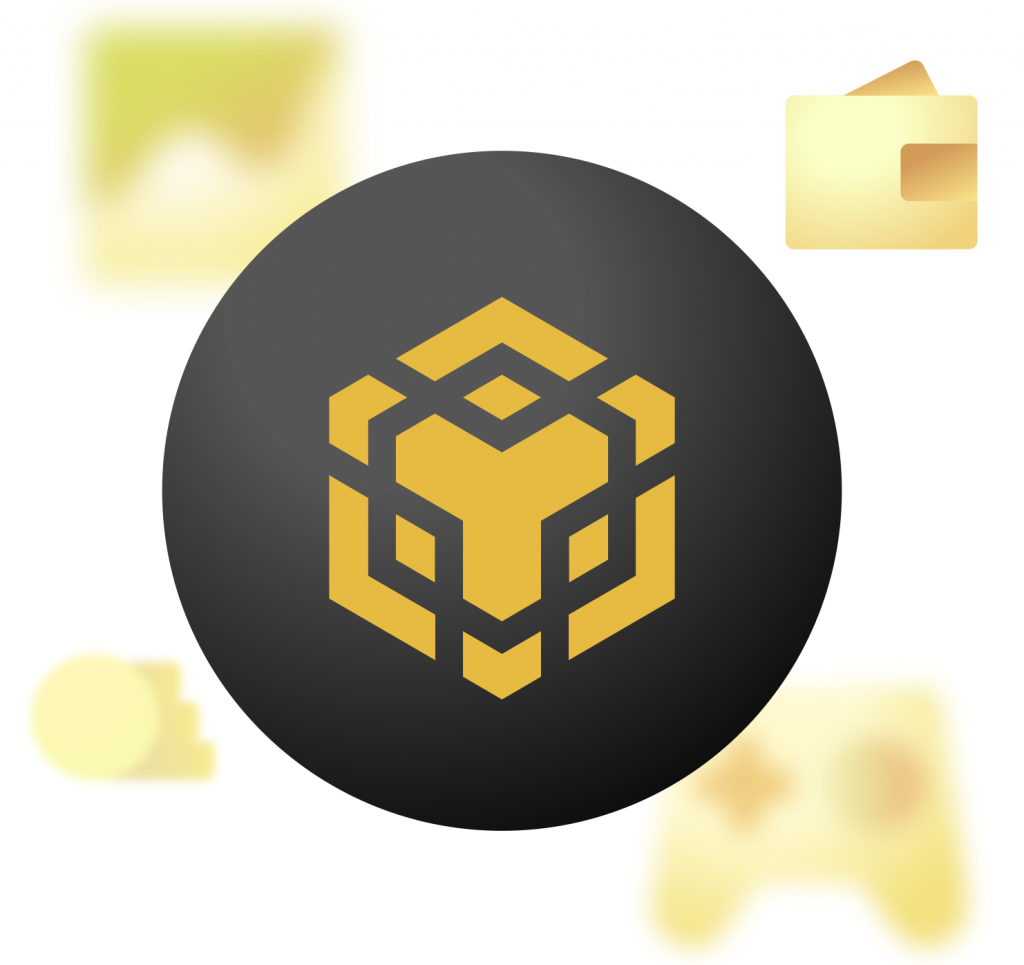
BSC is part of the larger BNB Chain ecosystem, which comprises three additional chains and platforms: BNB Beacon Chain (a governance and staking layer), BNB Greenfield (a data storage platform), and zkBNB (a zero-knowledge rollup for scaling).
BSC is the EVM-compatible smart contract execution layer of the BNB Chain ecosystem, and it operates on a proof-of-staked authority (PoSA) consensus mechanism. This is a hybrid approach combining features from delegated proof-of-stake (DPoS) and proof-of-authority (PoA).
So, why are developers building on BSC?
First of all, BSC is known for its high transaction speed and low transaction costs. This is a great motivation for developers to build on BSC, as the end users won’t have to pay astronomically high gas fees to use dapps and other platforms on the network.
Another reason is the fact that BSC is EVM-compatible. This means that the network supports EVM smart contracts and protocols. Consequently, when building on BSC, developers can use many of the same advanced tools they would use when building Ethereum dapps.
Now, with an overview of BSC, let’s dive into the last blockchain for developers: Polygon!
Polygon
The growth of Ethereum has highlighted its scalability issues. During peak demand, gas prices can rise excessively, making it economically unviable to make small, frequent transactions. Fortunately, this is where networks like Polygon enter the equation.
Polygon was initially launched as ”Matic Network” in 2017, and it’s a layer-2 (L2) scaling solution for Ethereum. In short, Polygon is a PoS sidechain running parallel alongside the Ethereum mainnet. Through various technologies, Polygon is able to deliver fast transaction speeds at a fraction of the cost of Ethereum.
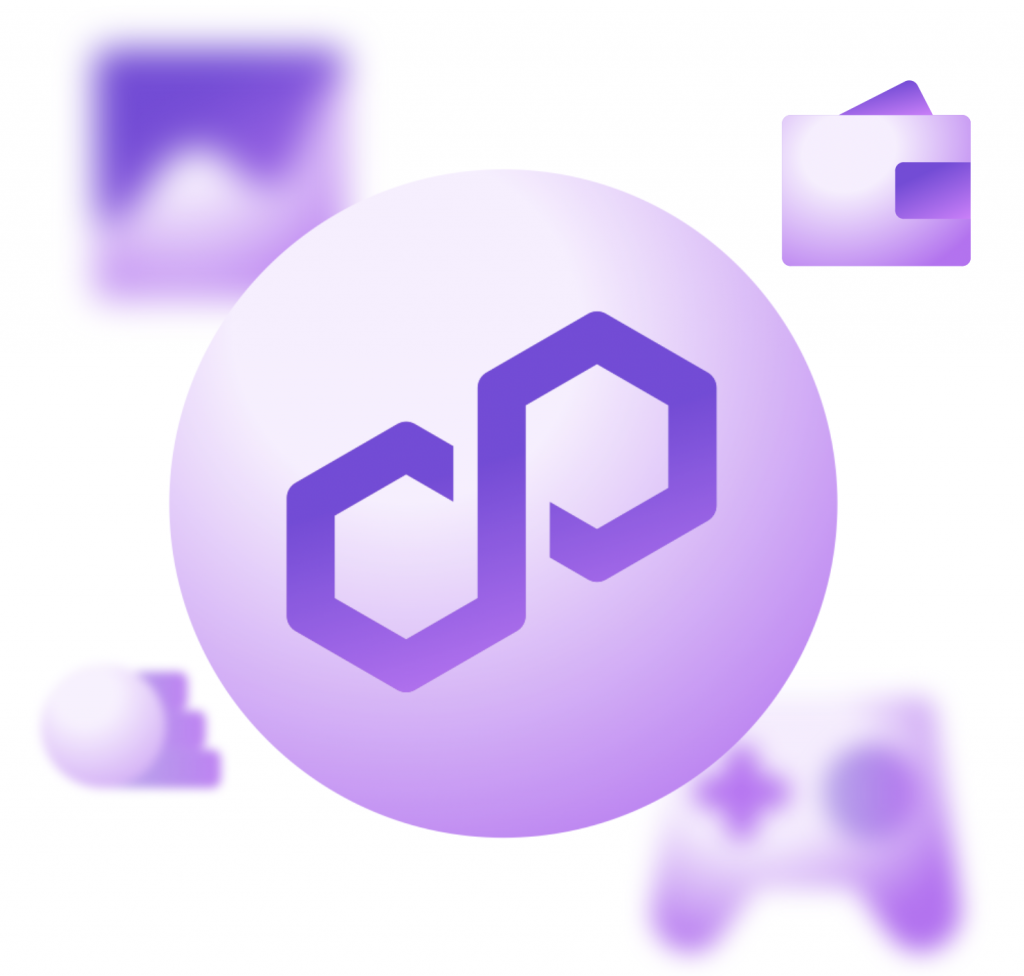
Nevertheless, why are developers building on Polygon?
Polygon has several prominent advantages, and the clearest examples are the high transaction speeds and low costs compared to Ethereum. This makes it cheap for end users to use dapps running on the Polygon blockchain. What’s more, much like BSC, Polygon is also EVM-compatible. Consequently, developers can use powerful and advanced Ethereum tools to build on the network.
To explore Polygon further, check out the following guide on Polygon PoS vs Polygon zkEVM!
Popular Blockchains for Developers – Which Blockchain and Tools Should I Use?
When it comes to Web3 development, one of the first things you generally need to consider is which chain you want to build your project on. However, what if you didn’t have to choose? Well, when working with Moralis, you don’t!
Moralis is an industry-leading Web3 API provider, and all our interfaces are cross-chain compatible. Consequently, with Moralis, you can leverage the same tools to build dapps across all the biggest blockchains, including Ethereum, BSC, Polygon, Arbitrum, Optimism, Gnosis Chain, and many others!

In Moralis’ suite of Web3 APIs, you’ll find numerous interfaces for multiple use cases. And you’ll find three notable examples below:
- Wallet API: Moralis’ Wallet API supports more than 500 million addresses. With only single lines of code, you can effortlessly get any wallet’s balances, transfers, NFTs, etc. Consequently, this is the ultimate tool for integrating Web3 wallet functionality into your dapps. For instance, here’s how easy it is to get the native balance of a wallet with the
getNativeBalance()endpoint:
const response = await Moralis.EvmApi.balance.getNativeBalance({
"chain": "0x1",
"address": "0xDC24316b9AE028F1497c275EB9192a3Ea0f67022"
});
- NFT API: The NFT API is the ultimate NFT data analytics tool for Web3 development. With this premier interface, you can effortlessly query NFT balances, transfers, metadata, and more. For example, with the
getNFTMetadata()endpoint, you can seamlessly get the metadata of any token:
const response = await Moralis.EvmApi.nft.getNFTMetadata({
"chain": "0x1",
"address": "0xb47e3cd837dDF8e4c57F05d70Ab865de6e193BBB",
"tokenId": "1"
});
- Blockchain API: Moralis’ Blockchain API is the ultimate tool for blockchain data. With only single lines of code, you can get the contents of any block, smart contract events, logs, and much more. For instance, this is how easy it is to get the contents of a block using the
getBlock()endpoint:
const response = await Moralis.EvmApi.block.getBlock({
"chain": "0x1",
"blockNumberOrHash": "18541416"
});
Check out all our interfaces by visiting our Web3 API page!
Also, did you know that you can access our APIs for free? So, sign up with Moralis and become a Web3 developer today!
Summary: What are the Biggest and Most Popular Blockchain Networks for Developers?
In today’s article, we explored the biggest and most popular blockchains across the following three dimensions:
- Market Cap
- Transaction Volume
- Ecosystem
We also covered the biggest and most popular blockchain networks for developers, where we dove deeper into Ethereum, BSC, and Polygon!
If you’d like to explore other networks, make sure to check out Moralis’ Web3 Wiki. The Web3 Wiki is the industry’s best dapp store, and you can use this tool to discover new blockchain networks for developers, dapps, and other Web3 projects! Also, if you’re serious about blockchain development, don’t forget to sign up with Moralis. You can set up your account entirely for free, and you’ll get instant access to all our premier Web3 APIs!
